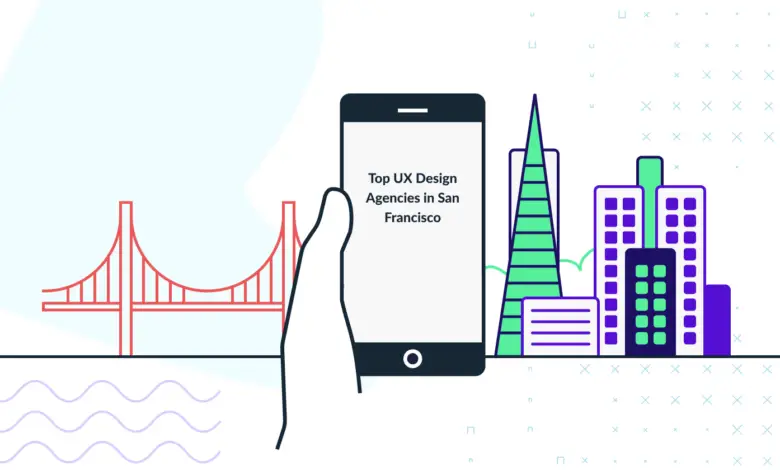Understanding the Global Potential of UX Agencies Based in San Francisco

There are several different ways to interpret the term “boutique agency,” a category most San Francisco-based UX agencies fall into. Some think of them as small design agencies, while others view them as companies that practice their design expertise only to serve a particular niche.
These San Francisco agencies tend to be local, usually operating in tiny rented office spaces and relatively modest payrolls instead of their full-scale, multi-located, high payroll counterparts.
The Function Of San Francisco UX Agencies

Unlike full-service design agencies, boutique agencies are relatively small. Due to the small size of their teams, they must also operate under their unique service dynamic, even when the nature of the job and the tasks performed are very similar to large design companies. Large agencies also have very strictly defined responsibilities among positions in the company’s departments. Therefore, a copywriter will only write content for campaigns; a client servicing manager will serve as an intermediary between internal teams and the company’s clients, and so on.
Because staffing is far more limited in San Francisco UX boutique agencies, each staff member has some level of understanding in every part of the design process. That means that various members of the agencies’ staff share creative input and cross-training in different skill sets required for the design projects to be completed. Because all staff members have a basic comprehension of the design process from start to finish, they can contribute to any campaign at any point in the design process, leading to more sources of creative contributions.
In a large UX design firm, the role delineation means that the communication about the design has to always start within a particular department and work its way linearly through a chain of personnel. But in smaller San Francisco UX agencies, every member of the staff is likely involved in completing a project, which means that there are no account handlers that take over a project from the onset. Instead, it is brought right to the attention of almost any member of the staff. This means that nearly anyone will be a point of contact as most of the team will somehow be involved in the end product.
One of the primary challenges boutique San Francisco UX agencies face is their ability to balance their workload between limited staff and keep their profits up. Therein lies a significant difference in the business model of a boutique agency and a giant named design company. A boutique agency’s primary objective is client retention, being that this is their primary source of income. Therefore, rather than focusing on acquiring as many new accounts as possible, SF boutique agencies prioritize providing satisfactory results to and retaining their existing clients, weighing the workload carefully against staff resources. Conversely, a large design agency, with its large staff, must prioritize acquiring new accounts, perpetually expanding its client base to survive and thrive in the marketplace.
Conventional wisdom seems to be that “bigger is better intuitively,” but in the design sphere, providing your project to a smaller San Francisco UX boutique agency can yield exceeding global market potential. So what are the perks and advantages of a boutique agency over a large design company?
The Client Is Top Priority
Big-time design agencies employ immensely talented staff, but those people tend to focus on those accounts that bring in the highest revenue to the firm. That means smaller businesses are not prioritized since they are not bringing in as much money. Conversely, San Francisco UX agencies have fewer clients, allowing them to have a more personal relationship with them. SF agencies prioritize every client as their business model is based on client retention. When clients interact with members of an SF firm, the contact will be with those who make decisions about a particular project rather than an account manager. This also means that a business, regardless of its size or scope, will get every bit of attention that it deserves.
Cost-Effective Option

Just because a business chooses to work with a San Francisco UX boutique agency over a big name in the design world does not mean any sacrifice in the quality of the work. San Francisco agencies employ talented people who like to work in a smaller environment and more closely with clients. The benefit of the smaller scale environment is that it requires lower overhead costs, and those savings are passed on to clients in the form of lower prices.
Some people believe that hiring a smaller agency actually costs more, but this isn’t the case more often than not. Large design firms are well aware of the power of their name and their reputation. Since their goal is to pull in as much money as possible, these large design firms often leverage their industry standing to charge higher prices for their “premium” services. The big agencies posit that clients will have more confidence in a company that designed a new website for a big organization like Toys ‘R Us rather than one that updates or revamps one for a small grocery store.
But does that mean that they provide higher quality products than San Francisco boutique firms? Observing the website for Toys ‘R Us by comparison to one for a local grocer will show relatively nominal differences in quality. The only reason, then, that large agencies charge higher costs is simply due to their brand’s reputation rather than a higher quality output. So when you bring your business to a San Francisco UX agency, you pay less for a very comparable product to what you can get from the industry giants. Visit clay.global to see examples of works of one of the top San Francisco UX boutique agencies.
More Creative Freedom
Unlike their larger industry counterparts, which employ precisely specialized roles in the design process, smaller San Francisco agencies are staffed with employees who all have a basic understanding of the end-to-end design process. This means that if a particular employee is needed, they can jump in to assist at any point while developing a design for a client.
With multiple minds from different specialties being able to partake at any point in the process, there is more of a creative edge that San Francisco UX agencies hold. There is no uniform business model of production, which means that there can be a higher focus on the client’s needs rather than just being a production line that churns out a formulaic product to satisfy short-term net margins.
Therefore, clients should ask themselves who they have more confidence in developing creative solutions to inevitable roadblocks during the development process: is it someone who has a specific job in the production process or those with troubleshooting versatility that can develop creative and innovative solutions?
Ample Professional Resources
Many clients believe that when they bring their business to a large agency, they are putting their project in the hands of a more extensive staff with significantly more resources. But we live in a digital age now, and if that was true at one time, it most certainly isn’t true now. Any information that a San Francisco agency may need to develop your project can be found via online resources. While big agencies may promise extensive in-house resources for research and development for the design projects, a boutique agency can acquire the same information and employ it effectively in the same manner.
Conclusion

The decision of which UX agency to use largely depends on various factors based on client needs. If you choose to go with a large agency over a boutique option, your choice is fair, but don’t do it for the wrong reasons. Bigger does not always mean better, so the agency’s size should never be the deciding factor. Clients who conduct business with smaller design agencies tend to have their design needs fulfilled by skilled professionals at lower costs, positioning them to be better suited to compete on a global scale.
